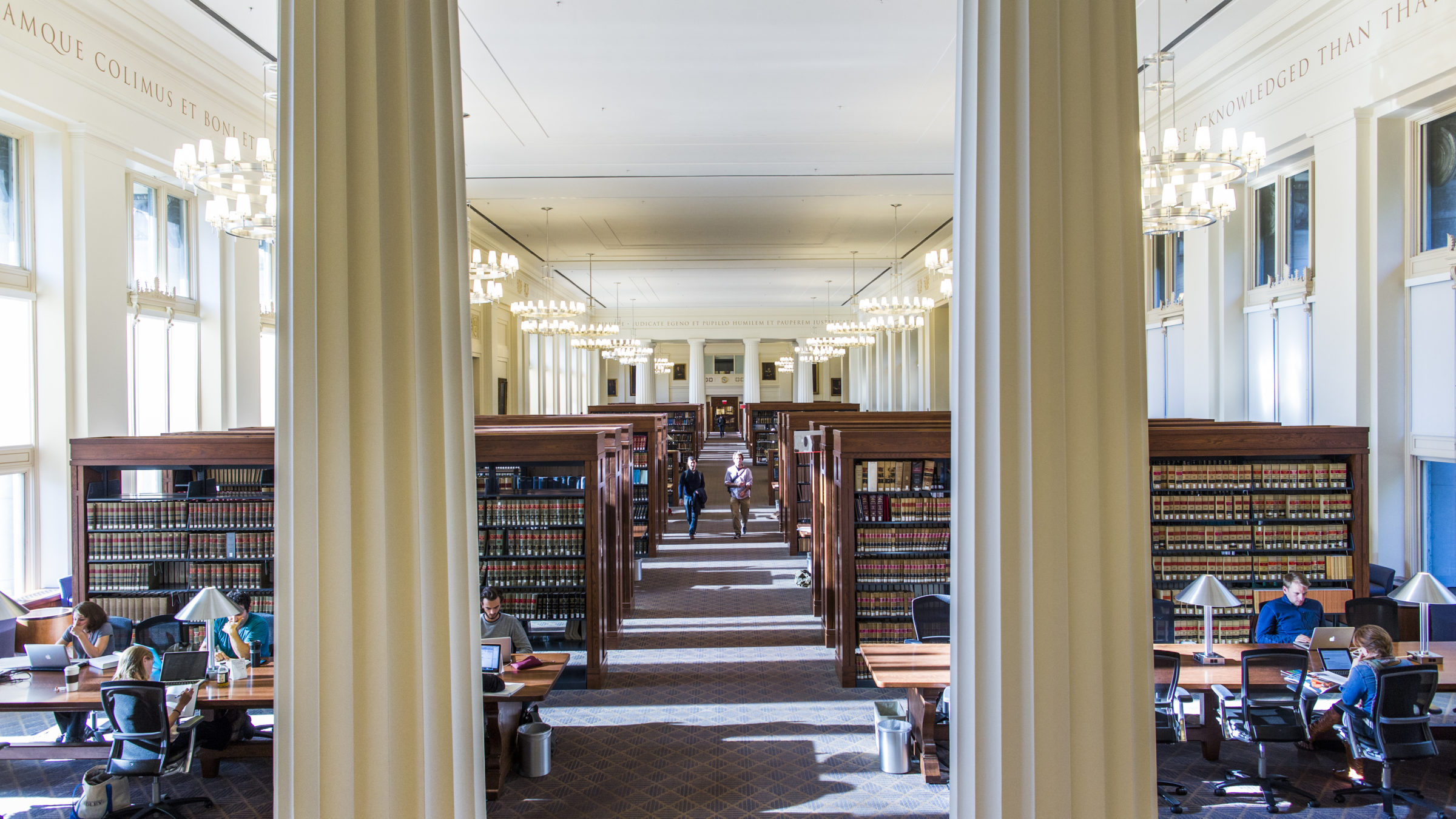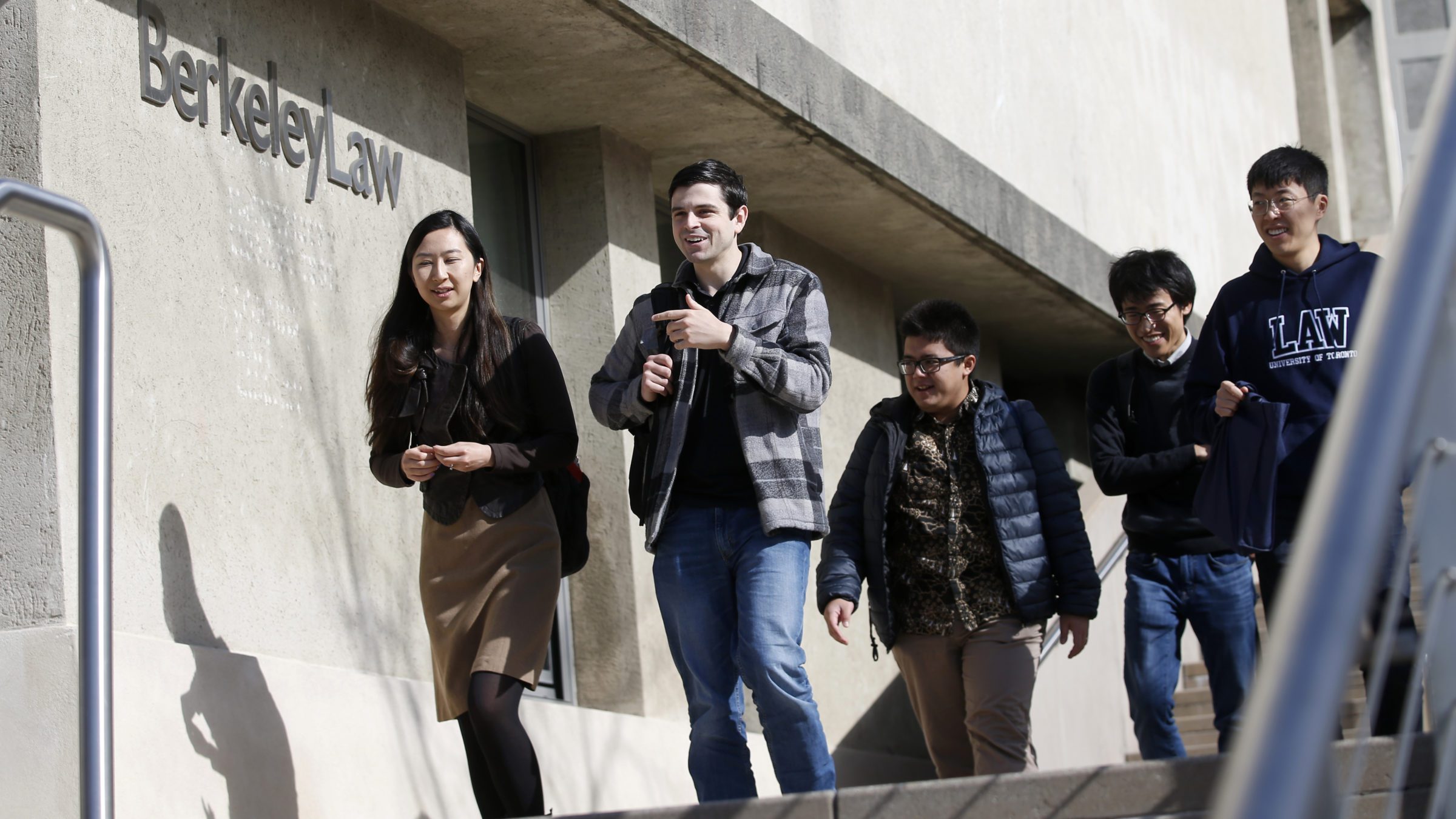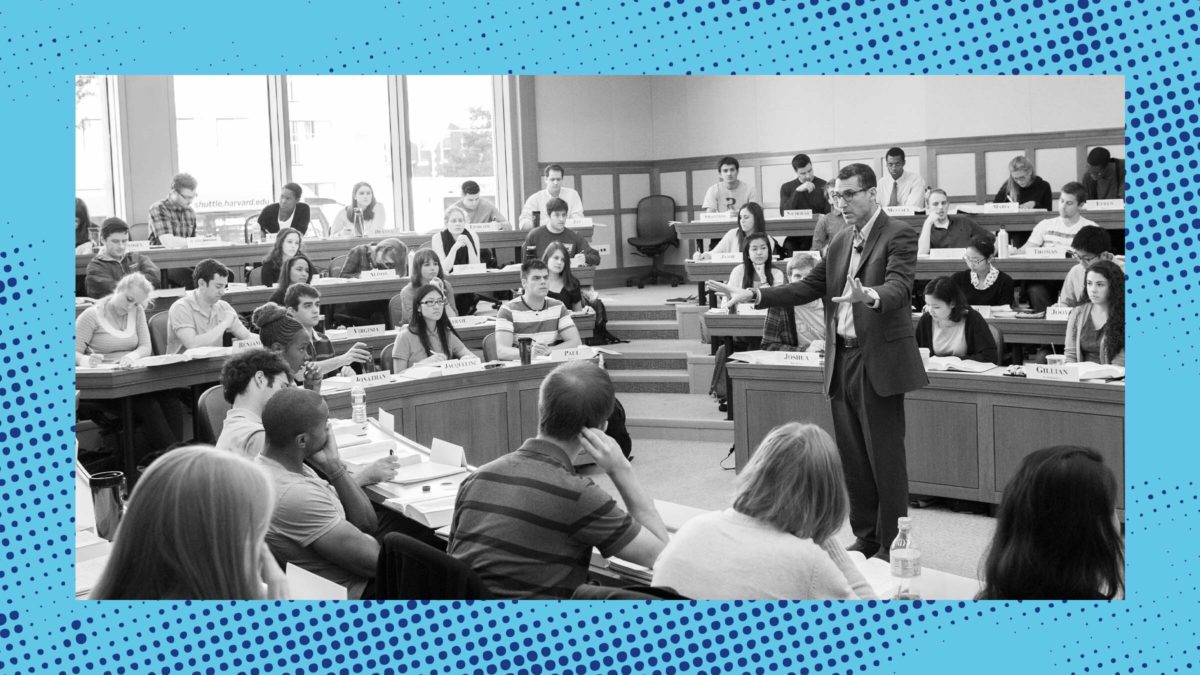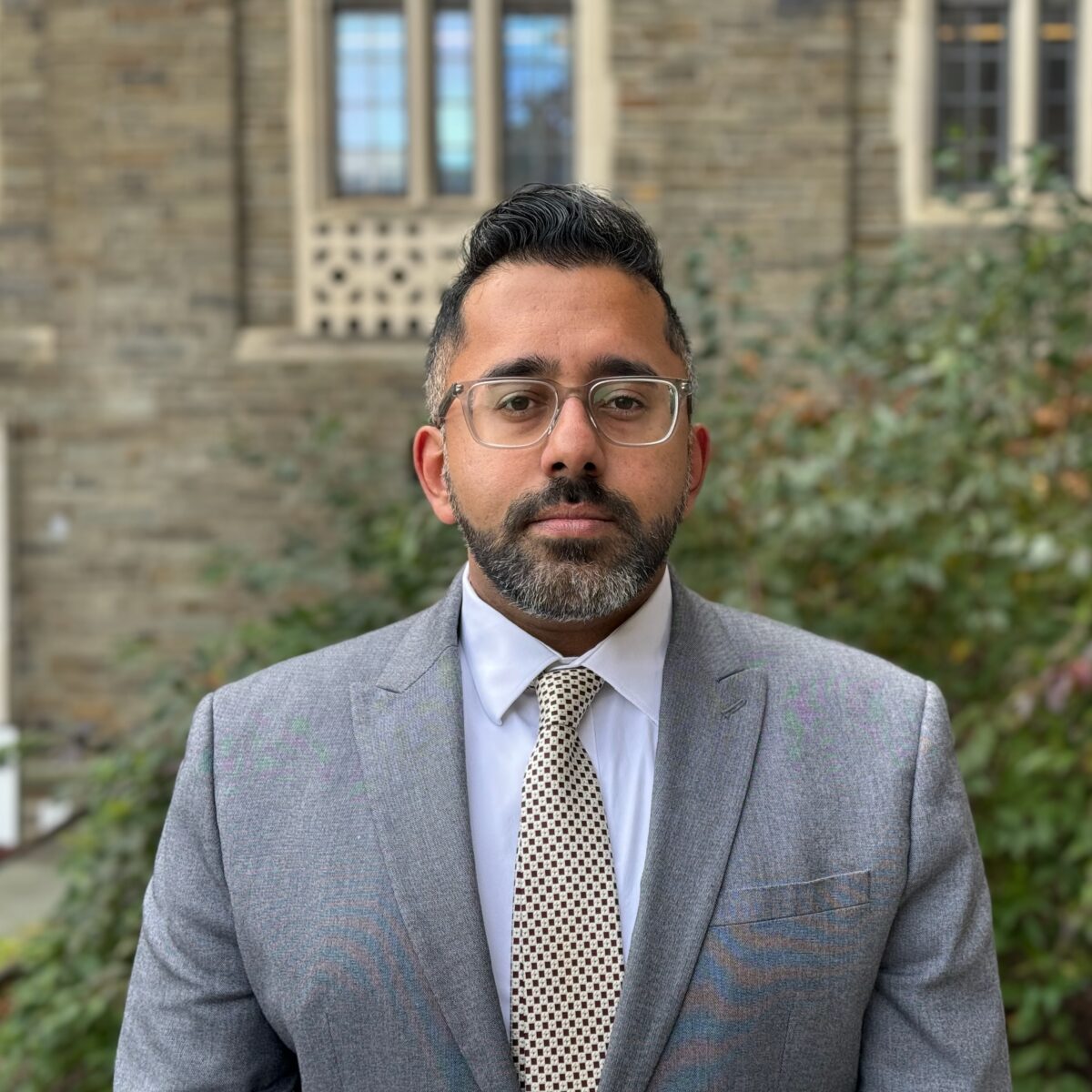Given how badly the last Supreme Court term sucked, and how much worse Supreme Court terms will suck for the foreseeable future, law professors hastily rejiggering their syllabi are low on the list of people you should feel concerned about right now. But since we are the people who shape how new lawyers perceive the world’s problems and how the law creates or cures them, our struggles with how to assimilate what has happened reverberate far beyond the classroom.
Law school, in theory, is supposed to do more than host esoteric academic debates: It is a chance to introduce students to the methods that judges and other political actors use to shape American society. Those opportunities reach their apex in Constitutional Law, a class in which students learn about all the times the Supreme Court has ostensibly intervened to protect minorities, safeguard civil rights, and help make a more perfect union.
The stories we professors tell about the Court can slip into easy hagiography, particularly if certain cases are highlighted and others minimized. But even the most reverential instructor would have a hard time finding much positive to say about constitutional law after the last few months. How can an introductory Con Law class honestly engage with the Constitution when the Court itself chomps at the bit to undo the few remaining precedents that enable racial, social, and economic progress, throwing out decades of constitutional law in the process?

Pictured: Students at Harvard Law School, just trying to figure out what the hell is going on (Photo by Brooks Kraft LLC/Corbis via Getty Images)
It’s not just Con Law, of course—staples of law school curricula, from Federal Courts to First Amendment to Administrative Law, have been transformed by Supreme Court cases this term. But Con Law exists as a special, foundational class for the mythmaking of courts and judges, where students learn about the genius of Marbury v. Madison, the wrongness of Lochner, and the legend of Brown v. Board of Education. Concepts like stare decisis, constitutional avoidance, and the countermajoritarian principle help explain how the court navigates political and social challenges. Throughout, the prevailing narrative is that although the justices may disagree, perhaps even vehemently, the court remains collegial and cognizant of its fragile place in the political system and American life.
That story—if anyone was ever fully telling it—creates a rosy, false narrative of what the courts actually do and why. It sets up the Court as a deliberative, non-political body in our beautifully calibrated checks-and-balances political system that uses legal reasoning to further democratic goals; it also teaches students that lawyers and judges are at the vanguard of protecting groups who lack political power. They are not.
When professors teach Brown as a crowning achievement in the Court’s history, they actively invoke an ahistorical example; for most of the Court’s existence, it has stood against racial justice. Just twenty years after Brown, the Supreme Court’s ruling in Milliken v. Bradley undercut Brown by preventing federal courts from remedying de facto segregation in districts where there was no “proof of segregation.” Subsequent cases like Parents Involved, which further cracked down on government consideration of race in public schools in 2007, have continued the erosion of Brown. Teaching Brown without teaching how the Court has effectively erased it tells only the upbeat half of the story and ignores the disgraceful denouement.
The fairy tale persists even in contemporary decisions. Some professors treat Justice Anthony Kennedy’s opinion in Obergefell v. Hodges, which recognized a right to same-sex marriage, as a triumph of civil rights progress. Just two years later, however, his weak opinions in Masterpiece Cakeshop v. Colorado Civil Rights Commission and Trump v. Hawaii betrayed his selective-at-best interest for claims of discrimination by members of marginalized communities. By venerating the Court as a protector and promoter of democratic values, many of us professors have helped bolster its legitimacy in ways it has not earned.
The latest term was merely a supercharged, unbalanced version of what the Court has done for most of its history. This year, bolstered by a 6-3 conservative supermajority led by hyperconservative new Trump justices, the mask fully came off. This new, radical right-wing Court acts with blatant disregard for the trappings that made the liberal fantasy once plausible.
A few recent examples show how far we’ve fallen. Justice Samuel Alito’s upending of the stare decisis standard in Dobbs v. Jackson Women’s Health Organization means that the Court can more easily overturn existing cases that the conservative justices dislike—and Justice Clarence Thomas’s concurring opinion provides a disturbing preview of future potential targets, from same-sex marriage to sexual privacy. In Kennedy v. Bremerton School District, Justice Neil Gorsuch’s misleading statements of fact, employed to stack the deck in favor of his preferred outcome, were so egregious that Justice Sonia Sotomayor included actual photographs in her dissent to refute his claims. The tacit overruling of the right to abortion in Whole Woman’s Health v. Jackson gave a green light for diabolical state legislators to deputize private citizens to trample over rights where state actors can’t.
Each of these tactics, of course, allowed the Court to achieve long-sought conservative ends; they never inure to progressives’ benefit. As a result, the seductive image of constitutional law that law students have learned for decades is irrevocably broken. Now the rest of us have to pick up the pieces.
In thinking about how to teach and talk about the Supreme Court’s recent decisions, professors might take some lessons from the dire straits of free speech cases, always a subject of intense political and ideological disagreement. When I teach those cases, I introduce the doctrinal frameworks while also trying to show how malleable those frameworks actually are.

“Okay so was EVERYTHING the professor said in that lecture bullshit, or was it more just like 80 or 90 percent?” (Jane Tyska/Digital First Media/East Bay Times via Getty Images)
For example, courts flexibly use standing—a big hurdle for many plaintiffs in speech cases—to keep disfavored plaintiffs out while letting very speculative cases in. Chief Justice John Roberts employed that tactic both last term and this one, allowing two cases with obvious standing deficiencies to proceed. Those cases struck down a California donor disclosure law and a federal campaign finance regulation; I’m sure it’s just a coincidence that our moderate chief used them to further long-standing right wing goals.
I believe my approach doesn’t abrogate teaching “the law” of free speech. Instead, I try to create a fuller portrait, emphasizing that although doctrine informs most First Amendment cases, it doesn’t explain all of them. Contingencies like contemporary political dynamics, the characteristics of the parties, and the policy preferences of judges and justices influence how the law gets formed. This doesn’t mean that there is no solid or stable First Amendment law; it just means that lawyers and parties have to prepare for shifting goalposts, no matter how strong the merits of their cases may seem.
This approach has a long history in legal thought; it’s basically a pedagogical spin on legal realism. And although it can come off as cynical, I find it hard to argue against cynicism given how radical the Court has become. In my view, cynicism can’t function as a period ending the sentence—a ”lol nothing matters” lesson plan doesn’t cut it when you teach for a living. But a skeptical perspective that encourages students to think strategically and creatively about how to achieve social progress, both when the courts aid in that fight and when they oppose it, tells the truth without wallowing in fatalism.
We professors have long rubbed elbows with the bench. Some of us want to become judges ourselves; others hope to be cited in their opinions; and still others want our star students to clerk on elite courts. Those social and professional desires mean that we have to remain especially vigilant to teach honestly about what courts and judges do. Today’s law students need to understand exactly what world they are going in to, with clear eyes about how much work they will have to do to fix it. Anything less does them a disservice.

